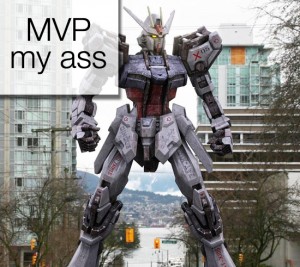MVP – That product which has just those features (and no more) that allows you to ship a product that resonates with early adopters; some of whom will pay you money or give you feedback.
-Eric Ries

I often meet entrepreneurs who fully embrace the principles of lean startup, yet seem to miss the “Minimum” part of MVP — and instead choose to work a LOT harder on a “viable product” instead.
Here’s a great example from under my own roof.
My wife, Carrie, recently had a good idea: To provide home-cooked meals for busy people, or people who simply don’t cook at home for whatever reason.
Of course, being big into tech, the long term vision for this idea has to do with creating a marketplace of sorts that matches up people who cook a lot, with people who want to be cooked for a lot. But to gauge demand and prove the concept, Carrie wanted to start by simply getting a handful of clients, each paying her to cook for them once-a-week.
A day or two after committing to this project and doing a few interviews with potential clients, Carrie approached me with some requests. She wanted me to design a logo, order business cards, create a website for her, and if possible, integrate a shopping cart so that she could take orders. She wanted this to be done before she went out and started gathering new clients, because she desired to have a brand, look professional, and have a place to post sample meal plans.
This is where I carefully suggested that she skip ALL of these things, and get her mind back into minimum viable mode.
I reminded her of one of my favorite stories, which Jason Cohen tells about the beginning days of WP Engine. He went out and got firm commitments from dozens of people who promised to pay if he built his idea, and he did this with nothing but a story. Now, he did have to build a fairly complex hosting platform before taking their money — but he always preaches to take their money as quickly as possible, as it serves as proof that they’re actually willing to pay for the proposed solution.
She quickly remembered that her first clients are not going to care about a brand, logo, business card, or website. Sure, these things are all nice to have, and arguably necessary at some point — but certainly not required to start. So she immediately started selling.
What was her MVP?
A story. A price point. A question. And a process.
Sounds overly simple right? Maybe too minimum? Nope, watch this:
“My father is a chef. I grew up working with him in our kitchen, and in his restaurants for many years and have always had a deep passion for cooking. I recently came to the realization that many people love to cook, or at the minimum, love to eat home-cooked meals — but can’t, due to time restrictions, or many of the other complications that life throws at them.
I’ve decided to solve this problem by offering full-service, in-house chef services at an affordable cost. I’ll create a meal plan, a grocery list, do the shopping for you, and then come to your home and cook you 7 days worth of meals. I’ll vacuum seal and preserve everything so it’ll taste as fresh as the day I cooked it, and I’ll provide you with precise reheating and preparation instructions for each meal.”
“I’ll do this for my fee plus the cost of groceries. My fee starts at $200 for a single person, and scales depending on the size of your family.”
“Would you be interested in being one of my first paid clients, and helping me refine this new business?”
That’s her story and price point in a nutshell. When she gets a “yes”, then she has a simple scheduling process to get everything started and on it’s way.
Did this work? Let’s fast forward only 3 weeks to today.
My wife is almost at her personal client capacity! She still doesn’t have a logo, a website, or a way to take payment other than cash, check, PayPal, or Square. Yet, just one more client will push her over the $50,000/yr mark, by herself, without help! She literally didn’t spend a single penny or waste any unneeded time on her MVP, which got her to this point.
Perhaps more importantly — she is learning a lot, and will now be able to design her brand, her website, and her entire web platform around the feedback and experience she’s getting from working with real clients first. She’s also figuring out how to hire, train, and represent more chefs so that the business can scale efficiently.
To many of you, this specific example doesn’t apply, as you’re likely developing an app, software, or a website of some kind where your product or service NEEDS to live. In her case, the actual service she’s providing can live 100% outside of any infrastructure, such as a web server, shopping cart, or even a brand — at least in it’s infancy, before developing the bigger vision.
But in many cases you can take the same approach.. just ask yourself these questions before executing your plan:
- What is the absolute minimum thing my target customer has indicated they’re willing to pay for?
- Can I creatively, or otherwise deliver this thing right now? And if not, how quickly and cheaply can I get there?
- How much do I think my customer is willing to pay for this minimum offering?
If you’re honest with yourself when answering these questions, you might discover some fat that you can cut away from your diabolical plans — and put the “M” back into MVP.
How did you start your last business? What did you absolutely need first, before you could start collecting payments? Tell me in the comments below.
